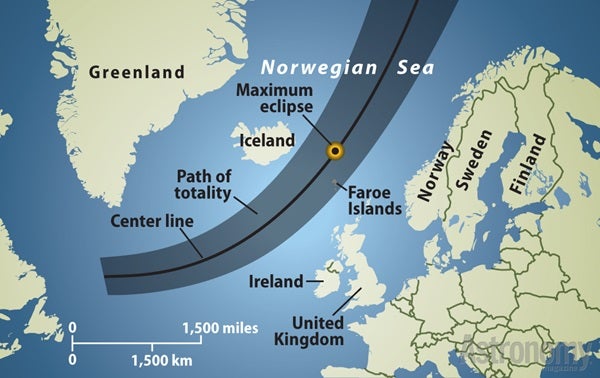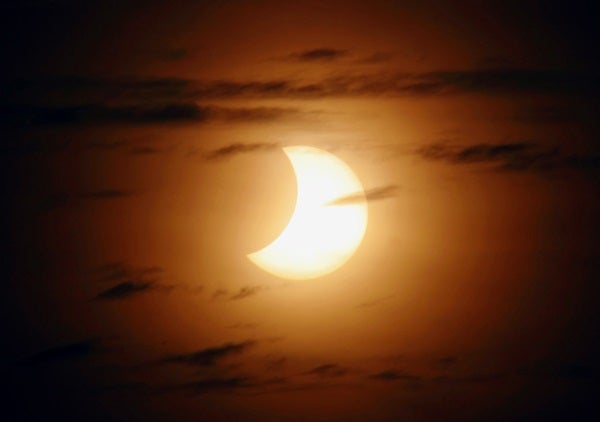Coverage courtesy of Slooh.
Europe promises to be the center of the astronomical world March 20. On that day, the Sun, Moon, and Earth align, and the Moon casts its shadow onto Earth’s surface. Where the alignment is exact — along a path that skirts south of Iceland before crossing the Danish Faroe Islands and Norway’s island of Spitsbergen — people will witness totality and bask in the glow of the Sun’s stunning corona. Across the remainder of Europe, observers will see a partial eclipse.
This northern track means the Sun hangs low in the sky along the entire eclipse track. On the Faroe Islands, which lie about halfway between Iceland and Norway, totality occurs with the Sun 20° above the southeastern horizon some three hours after sunrise. The total phase lasts about two minutes, with the precise duration depending on your location.
The largest landmass along the eclipse track is the Norwegian island of Spitsbergen in the Svalbard archipelago. Totality on the center line there lasts nearly 2 minutes and 30 seconds, but the Sun hangs only 11° above the horizon — not surprising considering the latitude is near 80° north.
Although few people live along the path of totality, millions will have an opportunity to see a partial solar eclipse. Keep in mind that the Sun remains brilliant even when the Moon blocks nearly all of it. Serious eye damage and even blindness can result from looking directly at the Sun. You should view a partial solar eclipse directly only through a safe solar filter. Check with a local astronomical society or public observatory to see whether they will be holding an eclipse event for safe public viewing. (And remember that a total eclipse requires no eye protection because the Sun’s bright surface is hidden entirely.)
But the biggest thrills await those hardy few who venture into the path of totality. As Senior Editor Michael Bakich of Astronomy magazine says, “I’ve never met anyone who regretted voyaging to see a total solar eclipse, and, I dare say, I never will.”
Fast facts:
- The next total solar eclipse visible anywhere in the world is March 9, 2016; totality lasts up to 4 minutes and 9 seconds across parts of Indonesia and the Pacific Ocean.
- The next total solar eclipse visible from the United States is August 21, 2017; totality lasts up to 2 minutes and 40 seconds along a track that stretches from Oregon to South Carolina.
- The Sun’s brightness on Mars is approximately equal to what eclipse observers will experience when the Moon obscures 57 percent of the Sun from view, a value reached at maximum eclipse across most of northern Europe.
- The Sun’s brightness on Jupiter is approximately equal to what eclipse observers will experience when the Moon obscures 96 percent of the Sun from view, a value reached at maximum eclipse across Iceland and northern Scotland.











